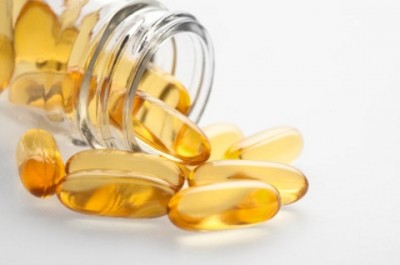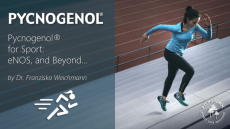The Pickle Juice Company elevates folk remedy anecdote to athletic recovery drink

The beverage was inspired by the hottest game in NFL history—literally. “It was 100 plus degrees on the field,” Fillip Keuppens, director of sales and marketing at The Pickle Juice Company, said about the season opening game between the Cowboys and the Eagles in 2000.
“After the game, the trainers from the Eagles were interviewed and someone asked ‘why were you guys not cramping?’ And they answered: ‘The players were drinking pickle brine,” Keuppens recalled.
The science
The company’s founder, Brandon Brooks, was intrigued by this folk remedy. During his research, he came across Dr. Kevin Miller’s which argues that muscle cramps are more neurological than physiological. “And the reason that pickle brine works is that the acid works as a neural inhibitor,” Keuppens told NutraIngredients-USA.
For the clinical study, muscle cramps were induced in the flexor halluces brevis of hypohydrated male subjects, which means losing more water than intake. The cramps were induced by percutaneous tibial nerve stimulation.
Thirty minutes later, a second FHB muscle cramp was induced and followed by ingesting 1 mL x kg(-1) body pickle juice, or deionized water as a control.
“Pickle juice, and not deionized water, inhibits electrically induced muscle cramps in hypohydrated humans. This effect could not be explained by rapid restoration of body fluids or electrolytes,” the researchers wrote.
“We suspect that the rapid inhibition of the electrically induced cramps reflects a neurally mediated reflex that originates in the oropharyngeal region and acts to inhibit the firing of alpha motor neurons of the cramping muscle”
A positioning struggle
Having been around for a decade and a half, Brooks told Ad Age in an interview that the product has “been discontinued more times than it’s been accepted.”
But the beverage has a small yet strong fan base, and the company capitalized on this by focusing marketing efforts at niche populations. “People are very familiar with it,” Keuppens said. “Everyone has heard anecdotal stories, everyone has that buddy who’s the athlete, and pickle juice is really big in [those circles].”
Hence, the company’s strategy involves creating awareness and empirical evidence to what Keuppens called an often merely anecdotal myth. According to Ad Age, the more focused marketing efforts boosted the company’s sales 102% year-over-year in 2010.
Functional formats
In addition to its 16oz bottles and 2.5oz Extra Strength shot bottles, the company launched its Pickle Juice Sport line, touting a “100% Natural” ingredient list, last August. “The only reason we’re not organic is because one of our natural flavors, dill—there’s no organic dill manufacturers,” Keuppens said.
“With that said, we didn’t put our 100% Natural badge on until after we were vetted by Expo West,” he added. “They don’t just let everyone in here; they had us send them samples and an ingredient list.”
According to Kueppens, the company is now at a good growing pace. “We’re catching up with market demand. Within a month, we’re going to release a press releases on a new product targeted for runners,” he said. “It’s a really exciting and fun time for us.”
Study Cited:
Source: Med Sci Sports Exercise
Published in print, doi: 10.1249/MSS.0b013e3181c0647e
Reflex inhibition of electrically induced muscle cramps in hypohydrated humans.
Authors: Miller, K.C., et al.

















